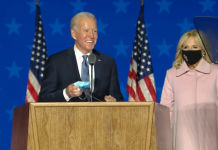CHICAGO — Fifty-four Chicago U.S. Postal Service letter carriers were among the 2,863 postal employees attacked by dogs last year, yet that pales in comparison to the 4.7 million Americans bitten annually — the majority of whom were children.
According to the City of Chicago’s Commission on Animal Care and Control, nearly 2,000 Chicagoans are bitten annually. Fortunately, dog bites are preventable through training, proper control of dogs and education.
These statistics are part of the reason the Postal Service recognizes National Dog Bite Prevention Week®, an annual event designed to provide consumers with information on how to be responsible pet owners while increasing awareness of a public health issue.
“We often hear two tall tales at the Postal Service — ‘the check’s in the mail,’ and ‘don’t worry, my dog won’t bite’,” said Delores Killette, Postal Service vice president and Consumer Advocate. “Given the right circumstances, any dog can bite. Working with animal behavior experts, we’ve developed tips to avoid dog attacks, and for dog owners, tips for practicing responsible pet ownership.”
To spread the word that dog bites are preventable, the Postal Service is working with the American Academy of Pediatrics (AAP), American Veterinary Medical Association (AVMA) and the American Society of Plastic Surgeons (ASPS). Other organizations include the American Society of Maxillofacial Surgeons (ASMS) the American Society for Reconstructive Microsurgery (ASRM) and Prevent The Bite.
“Warm and wonderful relationships are shared between more than 72 million pet dogs and their owners in the United States,” said Dr. Gail C. Golab, director of the AVMA’s Animal Welfare Division. “To protect those relationships, everyone must take responsibility for preventing dog bite injuries.”
“Any dog can bite,” Golab added. “Even the gentlest dog, if it is physically or mentally unhealthy, is in pain, feels threatened, or is protecting its food or a favorite toy, can bite. Not only is it important to understand how dogs behave, it is important to understand how our behavior may be interpreted by a dog. To prevent dog bites, we need to find a common language. Finding that common language is the focus of effective dog bite prevention educational efforts.”
“Half of all children will be bitten by a dog by the time they’re high school seniors,” said Dr. Alison Tothy, chair of the committee on injury and poison prevention of AAP’s Illinois chapter. “It’s so important for parents to supervise young children around dogs at all times, and it’s just as important for children to be taught from an early age how to keep from being bitten.”
Plastic surgeon Loren Schechter of Morton Grove, IL, knows all too well how devastating injuries from dog attacks can be. “More than 30,000 reconstructive procedures after dog bites were performed last year, up eight percent since 2008. Unfortunately, many of these surgeries were performed on children,” said Schechter, member of the ASPS, ASRM and ASMS. “Children are frequently bitten on the face, which can result in severe lacerations, infection or scarring.”
Kelly Voigt, 18, was the victim of a savage dog attack when she was seven years old, and needed 100 stitches to her face as part of her recovery.
“Dog bite prevention education cannot begin early enough,” said Voigt. The experience was the catalyst behind the creation of Prevent The Bite, a non-profit organization that promotes dog bite prevention to young children. To date, Voigt has spoken before more than 10,000 elementary school students.
To help educate the public about dog bites, the AVMA developed a brochure, “What you should know about dog bite prevention,” offering tips on how to avoid being bitten, what dog owners can do to prevent their dogs from biting and how to treat dog bites.
Tips include: Pick a dog that is a good match for your home, consult your veterinarian for details, socialize your pet and avoid aggressive games with your pet. To access the brochure online, visit www.avma.org/press/publichealth/dogbite/mediakit.asp.
The Postal Service places the safety of its employees as a top priority. Letter carriers fearing for their safety due to a loose or unrestrained pet may curtail delivery and ask homeowners to pick up their mail at the Post Office until the carrier is assured the pet is restrained. In cases where carriers see the dog roaming, delivery could be curtailed to the neighborhood.
The Postal Service offers these tips as well:
How to Avoid Being Bitten
* Don’t run past a dog. The dog’s natural instinct is to chase and catch prey.
* If a dog threatens you, don’t scream. Avoid eye contact. Try to remain motionless until the dog leaves, then back away slowly until the dog is out of sight.
* Don’t approach a strange dog, especially one that’s tethered or confined.
* While letter carriers are discouraged from petting animals, people who choose to pet dogs should always let a dog see and sniff them before petting the animal.
* If you believe a dog is about to attack you, try to place something between yourself and the dog, such as a backpack or a bicycle.
How to Be a Responsible Dog Owner
* Obedience training can teach dogs proper behavior and help owners control their dogs.
* When a carrier comes to your home, keep your dog inside, away from the door in another room.
* Don’t let your child take mail from the carrier in the presence of your dog. Your dog’s instinct is to protect the family.
* Spay or neuter your dog. Neutered dogs are less likely to bite.
* Dogs that receive little attention or handling, or are left tied up for long periods of time, frequently turn into biters.
The Postal Service receives no tax dollars for operating expenses, and relies on the sale of postage, products and services to fund its operations.







